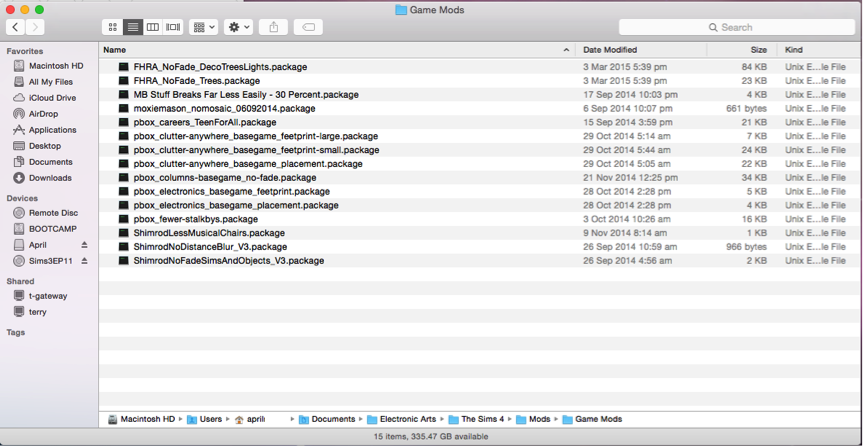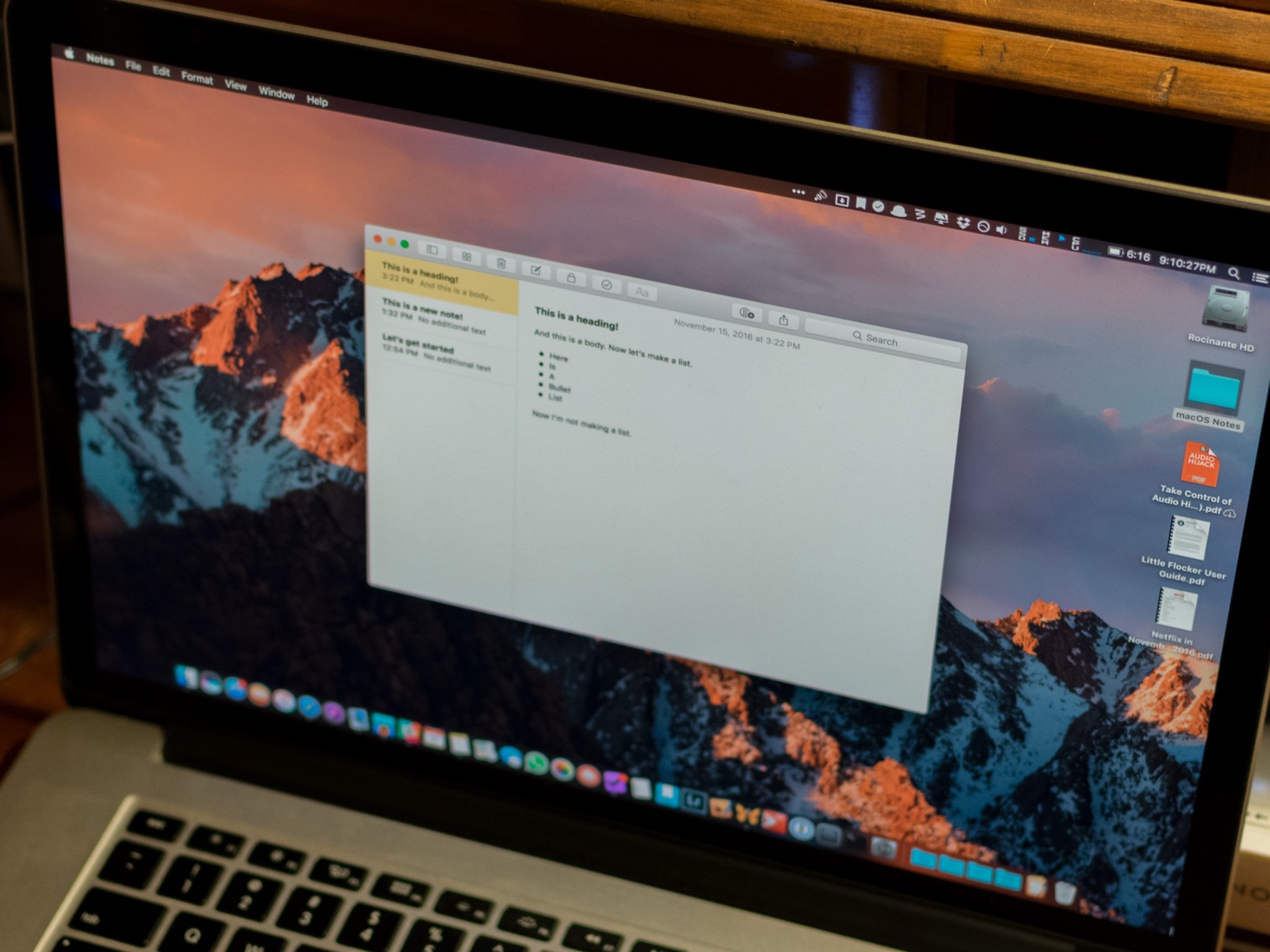There are a few ways to install gdbgui on your machine. There is even a way to run gdbgui without installing it. Read on to to find the one that's right for you.
Sep 08, 2019 The question is “How can I install GDB on a Mac?” I’ve never tried - but if you’re using Xcode or the “command line development tools” on the Mac from Apple and want to use a command line debugger, then use “lldb” instead (llvm/clang seems to be t. Installing G on a Mac. This section is intended to get you quickly started with C programming on your Mac. We'll be installing GCC 4.8.1 and GDB through a tool called Homebrew. If you want an additional guide on all of the following steps (except for installing GCC), the one by Moncef Belyamani is quite helpful. When you follow it, ignore. I'm having lots of problems with GDB; usually crashes and starts using 100% CPU until I kill the process using the activity monitor on the Mac (using Mavericks). How do I remove GDB from my machine (using GDB 7.6.1)? I plan to install an older version (GDB 6.x.x) after uninstalling this version.
Method 1: Using pipx (recommended)
gdbgui recommends using pipx, a program to run Python CLI binaries in isolated environments.

You can install pipx like this:
Restart/re-source your console to make sure the userpath is up to date.
Then, install gdbgui with pipx:
To upgrade run
When installation is finished, type gdbgui from the command line to run it, or gdbgui -h for help.
To uninstall, run

Try Without Installing
By using pipx, you can run Python CLI programs in ephemeral one-time virtual environments.
A new tab running the latest version of gdbgui will open in your browser. Press CTRL+C to end the process, and your system will remain untouched.
Method 2: Using pip
pip is a popular installer for Python packages. gdbgui is a Python package and as such can be installed with pip, though we recommend using pipx rather than pip if possible.
If you prefer to use Virtual Environments, you can activate one and then run
You can get upgrades with
To uninstall, run
Method 3: Download and Run Binary Executable
Download and run the binary executable for your system from GitHub Releases.
System Dependencies for Python Package
Note that this only applies if you are installing the Python package, and not using the binary executable.
- gdb (gnu debugger)
- Python 3.4+ (recommended) or 2.7
- pip version 8 or higher
Linux Dependencies
macOS Dependencies
macOS users must also codesign gdb: follow theseinstructions. This will fix the errorplease check gdb is codesigned - see taskgated(8).
Windows Dependencies
Note that windows is only supported for gdbgui versions less than 0.14.
- gdb, make, gcc
If you do not have already have gdb/make/gcc installed, there are two options to install them on Windows: MinGW and cygwin.
Install Gdb Mac
MinGW (recommended)
Minimal GNU for Windows (MinGW) is the recommended Windows option. Install MinGW with the 'MinGW Base System' package. This is the default package which contains make, gcc, and gdb.
It will install to somewhere like C:MinGWbin.... For example C:MinGWbingdb.exe, C:MinGWbinmingw32-make.exe, etc.
Ensure this MinGW binary directory (i.e. C:MinGWbin) is on your 'Path' environment variable: Go to Control Panel > System Properties > Environment Variables > System Variables > Path and make sure C:MinGWbin is added to that list. If it is not added to your 'Path', you will have to run gdbgui with the path explicitly called out, such as gdbgui -g C:MinGWbingdb.exe.
Cygwin
Cygwin is a more UNIX-like compatibility layer on Windows, and gdbgui works with it as well.
- Install cygwin
When installing cygwin packages, add the following:
- python3
- python3-pip
- python3-devel
- gdb
- gcc-core
- gcc-g++
Running from Source
See the contributing section.
Installing G++ on a Mac
This section is intended to get you quickly started with C++ programming on your Mac. We'll be installing GCC 4.8.1 and GDB through a tool called Homebrew. If you want an additional guide on all of the following steps (except for installing GCC), the one by Moncef Belyamani is quite helpful. When you follow it, ignore anything about installing Ruby; that is, stop after setting up git.
Homebrew

Homebrew 'installs the stuff that you need that Apple don't'. It's like Ubuntu's apt-get, where one can install packages easily from repositories. Instead of having to download, configure, and install something yourself, all you need to do is run one command, and Homebrew will take care of the rest for you.
Pre-requisites
Homebrew requires that you have either Xcode or the Xcode command line tools installed on your Mac. Xcode is a free integrated development environment similar to Eclipse designed by Apple and mainly intended for iOS development or targeting the clang compiler. In this class, we will focus on gcc.
Xcode is quite a big install, so if you do not want to install it, you can get away with just installing the Xcode command line tools. See a Stackoverflow discussion for instructions on how to install the command line tools regardless of whether you have Xcode installed.
Installing Homebrew
You need xcode command line tools to install Homebrew. It is very easy to install Homebrew. Open your terminal, and run the following command:
If this doesn't seem to do anything, try killing it (CTRL C) and running it again. Or checkout homebrew website.
GCC and GDB
Installing GCC
First of all, you should make sure that your Homebrew is up-to-date. Check to see if it is so with the following:
As mentioned before, installing packages with Homebrew is very easy. First, we will add the repository from which the GCC package is available, so that Homebrew knows where to find the package we want. The repository is at https://github.com/Homebrew/homebrew-versions.
Gdb Mac Os
We do this by using the brew-tap command. Keep your terminal open, and run the following command. (For more information on how brew-tap works, visit the Homebrew docs):
Install Gdb Windows
Next, we will actually install the GCC package. Run the following command:
It might take long time before the installation is complete. If you run into any issues, you can debug with:
When done, run the following:
The result should look like this:
USC Wireless Warning
Many people have had issues running the brew install commands while connected to USC Wireless. If you are having trouble, you can either try using a wired connection, a different wireless connection, or do the following:
- Download a homebrew cache
- Open Finder, press CMD (command) + SHIFT + G and type
/Library/Caches/Homebrew Extract the contents of the .zip you downloaded inside of the folder you opened in the previous step. Do not extract any of the .tar.bz2 or .tar.gz inside of the .zip folder.This should look as follows:
Run
brew install gcc48in the Terminal as instructed above.
Using G++
To compile with the newly installed G++ compiler, use g++-4.8.
(Advanced) Aliasing g++
Gdb Download Mac
If you prefer calling g++ directly, you can also create a bash alias, as follows:
Put these two lines at the end of the file ~/.bashrc, and run:source ~/.bashrc
For more information on bash alias, take a look at the GNU Docs.
Installing GDB
Here also we use Homebrew. The following instruction has been taken from GDB on OS X Mavericks and Xcode 5 guide. To install, run the following brew command.
Check if it's installed:
Gdb On Mac
The result should be gdb version 7 or higher.
Codesigning gdb
gdb is not going to debug yet. You'll get an error message like 'please check gdb is codesigned'. You need to create a certificate and sign gdb. By doing so you're telling the operating system that gdb is authorized to attach to other processes for debugging purposes. The following instructions have been taken from this Code Signing guide.
- Open application 'Keychain Access' (/Applications/Utilities/Keychain Access.app)
In Keychain Access, select the 'login' keychain in the 'Keychains' list in the upper left hand corner of the window.
Open the menu item in /Keychain Access/Certificate Assistant/Create a Certificate...
Choose a name ('lldb_codesign' in the example, but you can use anything you want), set 'Identity Type' to 'Self Signed Root', and set 'Certificate Type' to 'Code Signing'. Click 'Create'.
Click continue, continue and done.
Click on the “My Certificates” category on the left side and double click on the new “lldb_codesign” certificate.
Open the context menu for 'Trust' (click the triangle) and change the following:
When using this certificate: Always TrustNow close this window, and enter your login password to confirm this change.
Option-drag (this meaning holding the option key down and dragging) the new 'lldb_codesign' certificate from the login keychain to the System keychain in the Keychains pane of the main Keychain Access window to make a copy of this certificate in the System keychain. You'll have to authorize a few more times, set it to be 'Always trusted' when asked.
Switch to the 'System' keychain and drag a copy of the 'lldb_codesign' you just made onto the Desktop.
Switch to Terminal and then run the following command (copy paste it!):
sudo security add-trust -d -r trustRoot -p basic -p codeSign -k /Library/Keychains/System.keychain ~/Desktop/lldb_codesign.cerThen right click on the 'lldb_codesign' certificate in the 'System' keychain (not 'Login') and select 'delete' to delete it from the 'System' keychain.
Then reboot your system/computer.
Finally you can sign gdb:
codesign -s lldb_codesign /usr/local/bin/gdbIf this command doesn't work...then panic! Just kidding, be sure that you have gdb installed and that gdb is actually installed in /usr/local/bin. You may want to try 'which gdb' in your Terminal to figure out where it is.
Finally, remove the lldb_codesign.cer file that's sitting on your desktop, and gdb should be working at this point. :)